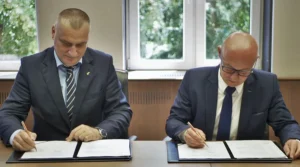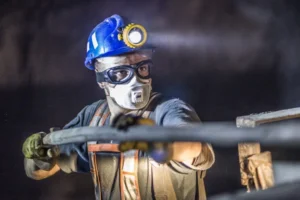What goes on in Poland on the 16th of August.
What is the future of hard coal? Government’s new plans.
The government is preparing an energy strategy for Poland. What is the future of hard coal mines, which are making losses?
The plan is that coal will constitute 60% of the energy mix. Today it’s 80%. Will there be radical changes?
It looks like the government will propose an energy policy that will cement the existing status quo of the dominant coal technology. By adding a few cleaner energy sources, the government wants to lower the average emissions of energy production to meet the European Commission’s targets included in the winter package.
Prof. Jerzy Niewodniczański: only atom can replace coal
„Nuclear energy is characterized by initial high investment cost, but later on the sole operation of nuclear power plants is exceptionally cheap,” said professor Jerzy Niewodniczański, former head of the National Atomic Energy Agency.
He also added that currently, a well developed nuclear reactors market is in the US, Korea, France, China and Russia. Companies from those states are offering roughly similar solutions because the technologies are alike. Poland is capable of constructing a small research reactor at best. Our scientists are working on such small reactors, but these are not installations that could be added to the national grid. Even if we did have our own technology, we do not have a domestic nuclear industry, which is necessary to construct a nuclear power plant.
According to his calculations an investment in such technology with a 1000 MW capacity would cost USD 4-5 bn. This is a rather costly endeavor, but at the same time very beneficial in the long-run. This is how nuclear energy works – at first a lot needs to be spent to invest, but the operation of nuclear power plants is exceptionally cheap.
„Inquiry committee on the VAT debacle” – professor Modzelewski applauds the idea
„Nobody is able to fix the EU version of the tax on goods and services without learning about the reasons behind its international debacle. The tax is being eaten up by cancer that has its authors and most of all – a lot of beneficiaries,” believes professor Witold Modzelewski, tax advisor.
„If it is possible to defraud over PLN 30 bn in taxes in Poland (EUR 200 bn in the entire EU), then there is and will be a lot of supporters of the status quo: they have the money (a lot), influence, they will buy what they want starting with the media and ending with experts,” the expert explained. „No legal or illegal business provides such a stable profit, including drugs, human trafficking and bank robberies,” he added.
„The biggest objective contribution of over a dozen of years of harmonization of this tax in the European Union is the dying out of traditional small-scale crime (e.g. fraud and extortion), whose profitability is laughably low in comparison to this kind of tax fraud. Most of all, the benefits of this phenomenon are widely accessible: money fraud is a lot more difficult while anybody can counterfeit invoices, even pupils,” he pointed.
Gazprom: Europe needs more gas
Russia’s Gazprom informed about a record-breaking increase of gas transmission to Europe. According to the company’s CEO Alexey Miller, the volume of gas transmitted via Nord Stream increased by 90% and via the OPAL pipeline by 30%. The increase is supposedly caused by the demand on the European market, which is getting ready for the winter heating season.
Gazprom’s CEO confirmed that the gas transit via OPAL increased by 30% in the first days of August. Germany’s OPAL gas pipeline receives gas from the offshore Nord Stream pipeline, which transports the raw material from Russia. This week the daily volume of gas in the facility located in Greifswald (which connects Nord Stream and OPAL) reached 140 mcm, which means 90% of Nord Stream’s capacity has been used. „And that in the summer season,” the CEO bubbled over with joy.
Miller also stated that while the transmission via Nord Stream increased, transmission via other Russia-Europe pipelines also went up, instead of decreasing. The Yamal pipeline that runs across Poland was used at its full capacity in the first week of August, whereas the transit of Russian gas via Ukraine grew by 10% at the same time. According to Miller, this results from „the objective market demand from European clients.”








